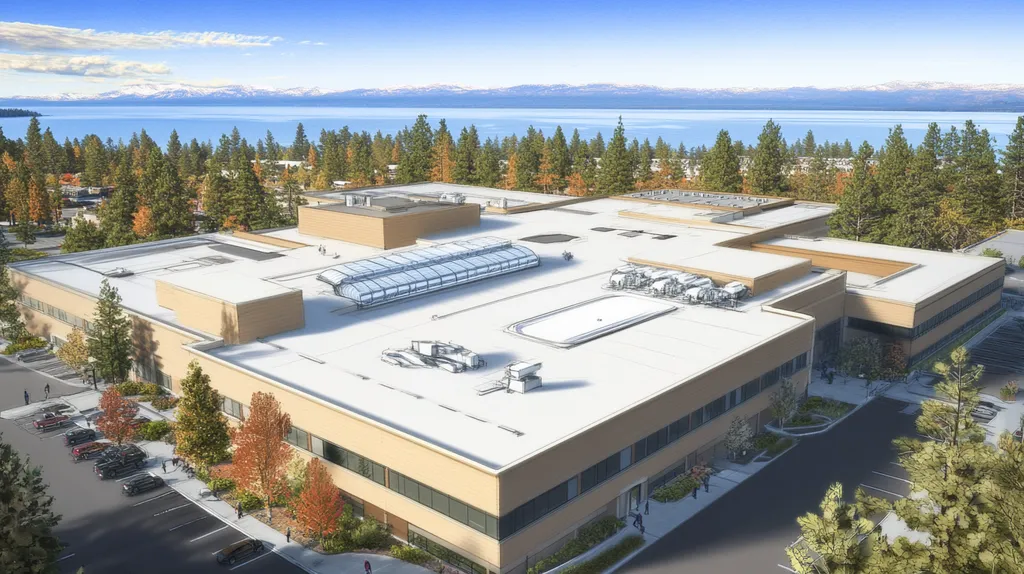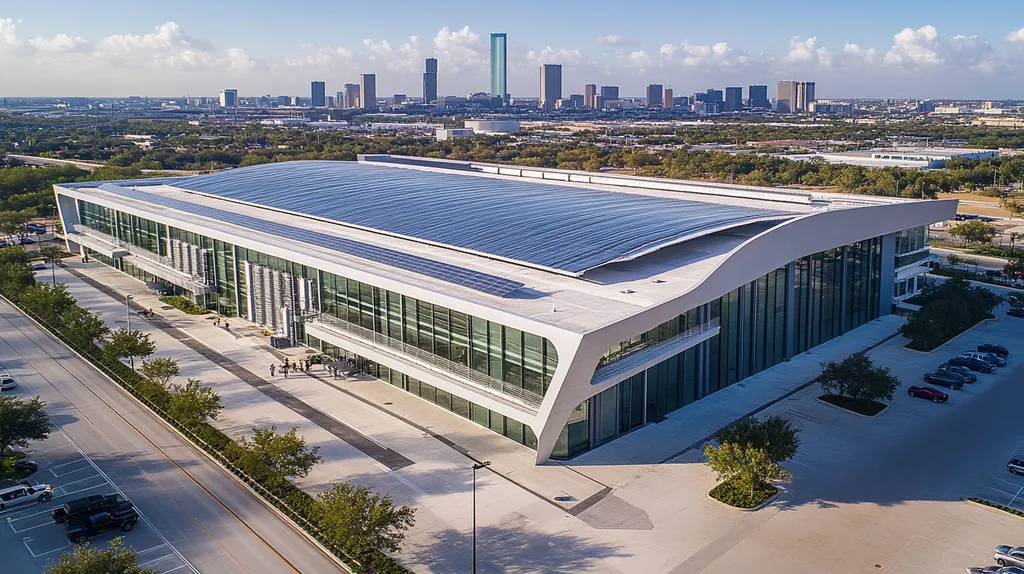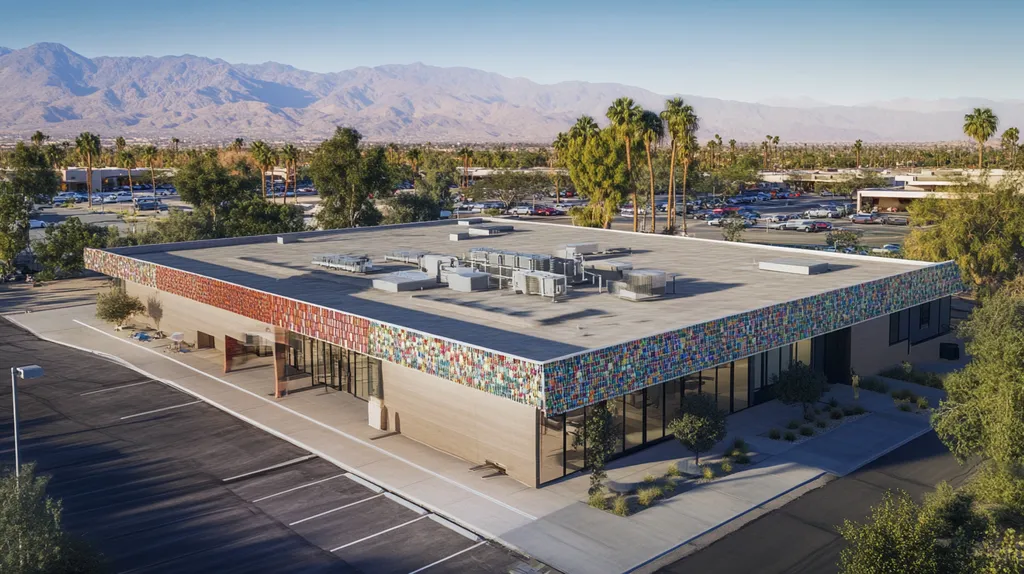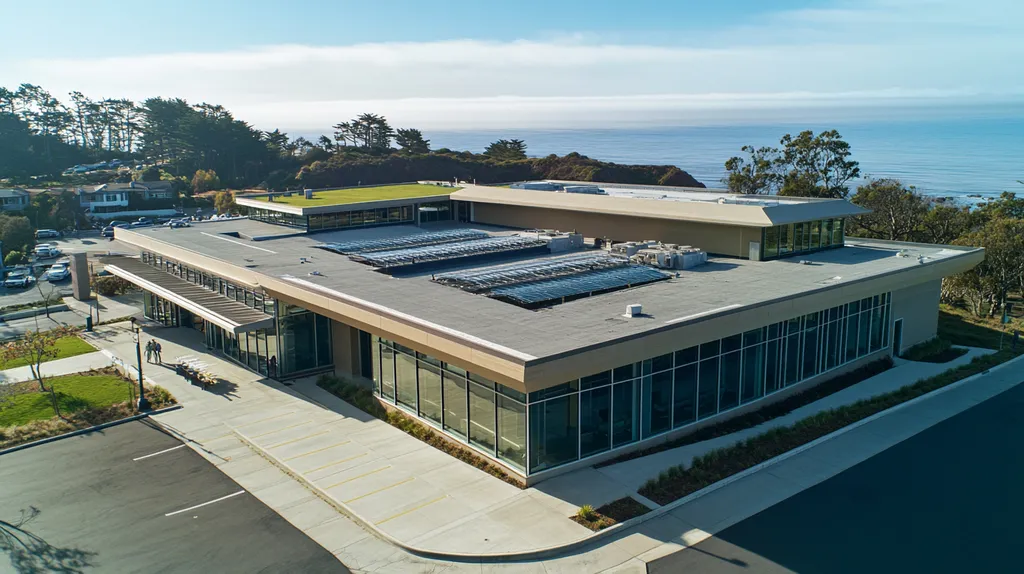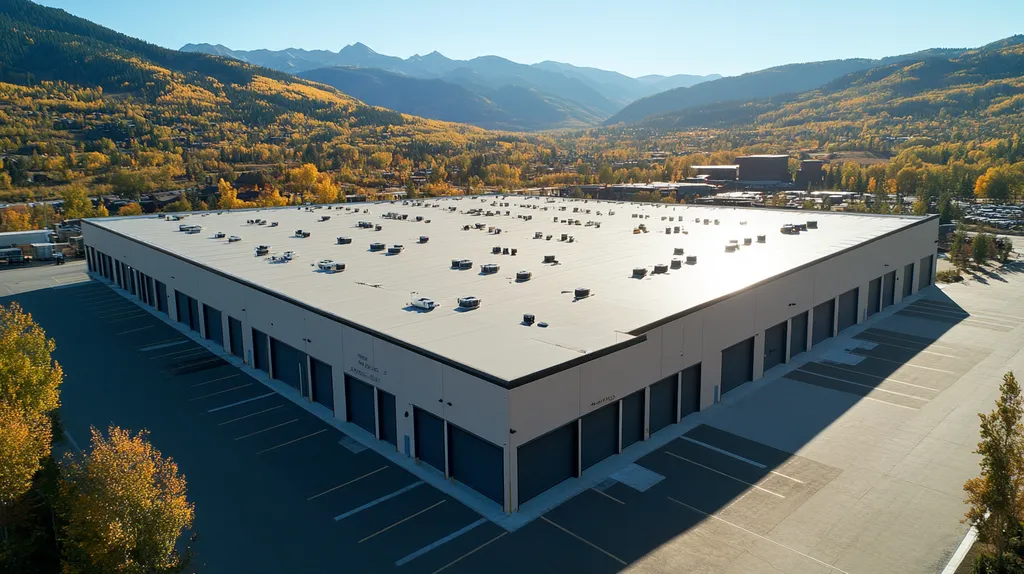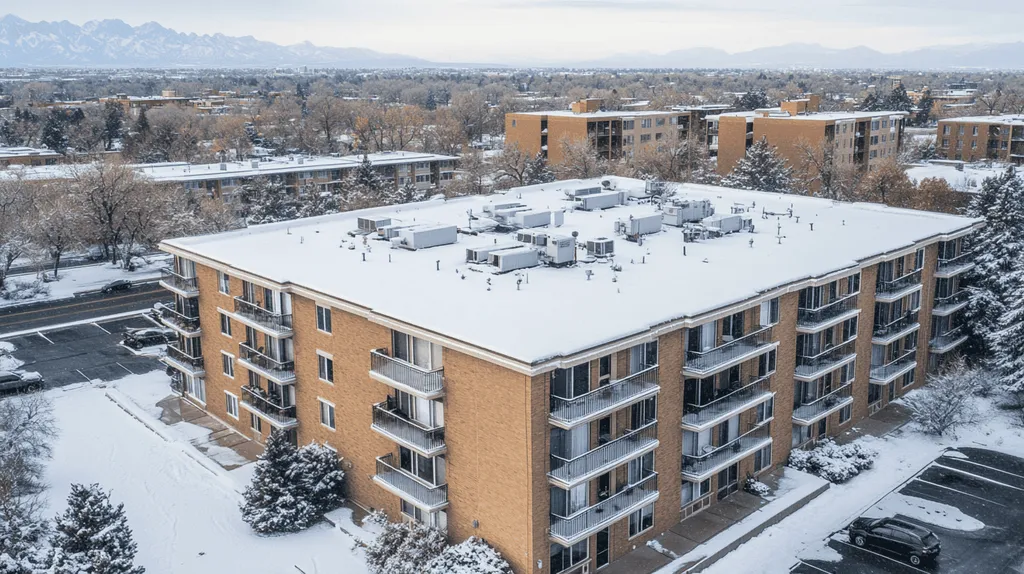In industrial roofing, what you can’t see absolutely can hurt you. Studies show that poor project visibility leads to a staggering 40% increase in maintenance costs and can slash a roof’s lifespan by up to 15 years.
For facility managers and property owners, maintaining clear oversight throughout a roofing project isn’t just about watching workers lay materials—it’s about protecting a crucial investment while ensuring operational continuity.
This comprehensive guide breaks down the essential elements of roof project visibility, from monitoring techniques to technology integration, helping you avoid costly pitfalls while maximizing your roofing investment’s performance.
SECTION 1: THE BASICS EXPLAINED
When it comes to industrial roofing projects, clarity is not just helpful—it’s critical. Did you know that nearly 30% of roofing issues arise from a lack of monitoring during installation? Understanding project visibility is essential for property owners and facility managers alike. In this section, we’ll define visibility, discuss its significance for your building’s performance, and outline effective ways to implement it in your roofing endeavors.
What It Is (In Plain Language)
Visibility in the context of an industrial roofing project involves the ability to closely observe and evaluate every aspect of the roofing process. This includes keeping an eye on materials, labor, and timelines. With clear visibility, property owners and project managers gain real-time access to crucial information.
Practically speaking, this can mean leveraging digital tools, conducting regular site inspections, or compiling thorough reports. Each of these elements contributes to a comprehensive grasp of the project’s current status. An informed team makes timely decisions, keeping everything running smoothly.
Complete visibility helps in catching unexpected challenges early on. For instance, if a delivery of roofing materials is delayed, the project team can make necessary schedule adjustments. Think of it like a well-rehearsed dance; when everyone knows the steps, the performance flows seamlessly.
Ultimately, greater visibility leads to improved project coordination and increased trust. When transparency is prioritized, it fosters a collaborative environment between contractors and clients—breaking down barriers rather than erecting them.
Why It Matters (To Your Building)
The significance of visibility in a roofing project extends far beyond short-term results. A project that is actively monitored is much less likely to encounter delays, which can result in soaring costs. Each day a roof replacement drags on could translate to lost revenue for businesses reliant on uninterrupted operations.
Moreover, ensuring transparency guarantees higher quality control. When everyone involved can track the project’s progress, they can catch errors before they spiral into significant problems. After all, a single roofing mistake can lead to pesky leaks and costly structural damage.
Focusing on visibility also enables companies to collect valuable data for future projects. Historical project information can be analyzed to enhance labor costs and material efficiency, ultimately leading to better budgeting and forecasting for upcoming tasks.
In essence, visibility not only safeguards current investments but also provides strategic insights for future planning. The more informed facility managers are, the better equipped they become to protect their valuable assets.
How It Works
Bringing visibility into roofing projects involves several key practices and tools. First, utilizing project management software that tracks progress in real-time can significantly enhance overall communication. These digital tools often feature intuitive dashboards that make data more accessible and user-friendly.
Regular site inspections are equally crucial. Scheduling consistent check-ins allows teams to make real-time adjustments based on what they find during inspections. This proactive approach helps identify potential issues before they snowball into headaches.
In addition, instituting quality assurance measures is essential. Setting clear standards and expectations aligns the entire team with the project’s goals, ensuring that everyone understands what success looks like.
Training team members on the importance of visibility is vital as well. It’s important that all personnel recognize their role in maintaining transparency, as empowered employees are more likely to contribute effectively to the project’s success.
Overall, integrating technology, consistent inspections, and training into roofing projects equips stakeholders with the visibility necessary for success. This approach not only results in superior roofing systems but also enhances the longevity of the building itself.
SECTION 2: PRACTICAL APPLICATIONS
Visibility in an industrial roofing project isn’t just a nice-to-have; it’s the backbone of operational success. A lack of visibility can lead to costly missteps, such as inflated expenses and project delays. In fact, studies show that inadequate roof inspections can account for up to 30% of unforeseen maintenance costs. Thus, understanding how to leverage visibility effectively enables facility managers and property owners to make informed decisions that enhance safety, efficiency, and budget alignment.
Common Uses & Examples
Roof visibility plays a crucial role across various functions in industrial settings. For instance, effective interaction with HVAC systems is paramount; without clear visibility, airflow may be hindered, leading to inefficiencies.
Moreover, visibility enables proactive maintenance strategies. Regular inspections pinpoint leaks before they become major headaches, saving both time and money. Drone technology and advanced imaging can be employed to enhance monitoring capabilities, ensuring roofs are surveyed efficiently.
Visibility also supports safety compliance by allowing for the identification of potential hazards. Regular monitoring ensures that roofs meet necessary safety standards, which isn’t just a box to tick—it’s essential in preventing accidents and the legal repercussions that follow.
By enhancing visibility, facility managers can make smarter decisions that lead to operational efficiency, underscoring the critical importance of this practice in industrial environments.
When You Need It Most
Certain conditions demand heightened roof visibility. Seasonal weather shifts, such as heavy rains or snow, can compromise roof integrity. Facilities undergoing expansions or renovations require focused visibility to ensure all systems mesh seamlessly.
After severe weather events, thorough roof assessments become not just advisable, but essential. Ignoring subtle signs of damage can lead to exacerbated leaks and soaring repair costs. Immediate visibility ensures that potential issues are addressed promptly, protecting the building’s infrastructure.
During significant system upgrades, visibility is crucial for data-driven decision-making. Understanding potential interferences from existing structures helps streamline installations and reduces delays.
By recognizing these pivotal moments, facility managers can prioritize visibility, leading to improved maintenance outcomes and more effective operations.
Interactions With Other Systems
Roof visibility isn’t a standalone feature; it interacts seamlessly with other facility systems. For example, the roofing system’s connectivity with drainage systems is vital. A monitored roof can guide water swiftly, preventing pooling that could lead to costly structural damage.
Moreover, integrating visibility with HVAC systems ensures that rooftop units operate at peak efficiency. A clear understanding of the roof terrain optimizes airflow, which translates to lower energy costs for the facility.
Security systems also rely on roof visibility, as roofs can be access points. Conducting regular inspections helps identify vulnerabilities that could leave facilities open to unauthorized entry.
Thus, cultivating solid connections between systems not only bolsters roof management but also enhances overall facility performance, ensuring long-term sustainability and compliance.
SECTION 3: KEY TERMINOLOGY DECODED
In the whirlwind of industrial roofing, mastering terminology is not merely a nicety—it’s essential. Misinterpretations can lead to costly blunders, delays, and even safety issues. For example, misunderstanding “R-value” or “drainage slope” can steer decisions in the wrong direction, resulting in inadequate roofing solutions. To navigate these turbulent waters, property owners and facility managers must decode the essential terms that underpin project success.
Essential Terms Explained
Understanding key terms is foundational in roofing discussions. Take “R-value,” for instance; it represents the insulation’s thermal resistance. A higher R-value translates to increased energy efficiency, which can make a real dent in a facility’s energy expenses.
Another vital term is “membrane.” This layer is the crucial waterproofing element of a roof, coming in thermoplastic or thermosetting varieties. Choosing the appropriate membrane can significantly impact both the roof’s lifespan and ongoing maintenance requirements.
Don’t overlook “flashing.” This critical material directs water away from sensitive areas, such as seams and penetrations. Properly installed flashing can save thousands in future repairs by preventing leaks and structural damage.
Industry Jargon Translated
Industry jargon often creates clouds of confusion. For example, the term “field” refers to the main expanse of the roofing system, separate from edges and penetrations. Knowing this distinction helps pinpoint where most activity occurs during installation or repair efforts.
“Substrate” is another term worth knowing. It denotes the foundational material supporting the roofing system and plays a key role in determining which roofing materials are appropriate. Understanding how substrates interact with roofing systems is crucial for effective project planning.
Lastly, “priority repairs” highlight pressing issues requiring immediate attention to prevent further damage. By identifying and addressing these needs promptly, facility managers can mitigate long-term impacts and keep the project on track.
Measurement & Units Simplified
Measurement units can be perplexing, but they are essential for clear communication in roofing. The term “square” is a fundamental unit, equivalent to 100 square feet of roof area. Accurate calculations using squares are vital for estimates and material orders, helping to eliminate excess costs.
Another important measurement is “pitch,” which is expressed as a ratio that indicates roof steepness. The pitch is critical for effective drainage and influences the choice of roofing materials, ensuring designs can withstand regional weather conditions.
Lastly, wind uplift ratings, measured in pounds per square foot, determine how well a roof can withstand wind forces. Understanding a roof’s wind uplift rating is pivotal for adherence to building codes, especially in gust-prone areas.
SECTION 4: DECISION FACTORS
When it comes to industrial roofing, making well-informed decisions is imperative for long-term success. One poorly executed choice can spiral into substantial cost overruns or project delays. By understanding key decision factors like cost considerations, performance trade-offs, and lifespan expectations, property owners and facility managers can steer clear of unnecessary risks and set the stage for favorable outcomes.
Cost Considerations
The money question usually leads the charge in roofing projects. Property owners must evaluate the initial installation cost but also factor in the total cost of ownership over the roof’s lifespan. While it’s tempting to cut corners with lower-cost materials, this can backfire when those materials don’t withstand the test of time.
For example, opting for cheaper single-ply membranes may seem appealing, but they often come with higher maintenance needs and shorter lifespans. Investing in higher-quality materials can reduce long-term expenses by minimizing repairs and extending the roof’s life.
Labor costs are another vital piece of the cost puzzle. Quality contractors may ask for a higher upfront fee, but their expertise can save property owners from making costly mistakes later on.
A thorough financial analysis should highlight hidden costs, such as energy efficiency and insurance premiums, linked to the choice of roofing materials. Wise investment in quality today can yield significant savings tomorrow.
Performance Trade-offs
Performance is a pivotal element driving roofing decisions. Choosing materials involves reconciling various factors such as weather resistance, insulation properties, and weight. Each choice can significantly impact both immediate and long-term functionality.
Consider this: while lightweight roofing systems ease the stress on structural supports, they may fall short on insulation, potentially leading to increased energy expenses. This trade-off can significantly affect operations, particularly in facilities with high heating or cooling demands.
Moreover, the specific requirements of a facility shape roofing system choices. Manufacturing plants that require high-temperature tolerance need materials that can withstand those conditions, ensuring operational efficiency is never compromised.
In summary, an effective evaluation of both performance and costs is necessary for attaining top-notch results in roofing projects.
Lifespan & Durability Factors
The expected lifespan and durability of roofing materials are critical factors that shouldn’t be overlooked. Short-lived roofing can cause frequent disruptions that derail business operations. Therefore, understanding material lifespan is essential for strategic long-term planning.
Take high-quality built-up roofs; they may serve reliably for 30 years or more, whereas lower-grade alternatives typically range from 10 to 15 years. This difference can greatly influence overall costs and continuity of operations.
Durability also hinges on environmental factors. Roofs located in coastal regions deal with unique challenges, such as salt corrosion, while those in arid zones face threats from intense UV exposure. Selecting the right materials tailored for specific conditions is key to enhancing longevity.
Ultimately, property owners must invest the necessary time to understand durability ratings and select building materials that fit their unique scenarios, improving roof performance and minimizing future expenditures.
SECTION 5: COMMON CHALLENGES
Industrial roofing projects can often feel like a game of high-stakes chess, where missteps can lead to costly consequences. Alarmingly, 40% of facility managers report problems arising from a lack of visibility during roofing projects. These challenges can lead to unexpected costs, prolonged project timelines, and even safety risks that no one wants to grapple with. Recognizing common issues, identifying early warning signs, and taking proactive measures are essential strategies for successfully navigating these projects.
Frequent Problems & Solutions
A lack of communication among project stakeholders is a prevalent hurdle in industrial roofing. Misunderstandings can result in costly delays and frustration. Establishing regular check-ins and a transparent reporting structure can iron out these wrinkles and keep the project on track.
Unpredictable weather events are another notorious foe. Sudden rain or unexpected snow can halt work and cause damage. Planning project schedules around historically dry seasons and remaining flexible can help mitigate these weather-related risks.
Hidden structural problems like rotting beams or sagging sections often lurk undetected until the project is underway. Conducting thorough pre-project inspections can uncover these issues early, allowing for timely interventions before they escalate into more significant problems.
Addressing these frequent challenges head-on equips teams with the strategies needed for a smoother roofing project experience, ensuring a timely and successful completion.
Warning Signs To Watch For
Facility managers should be keenly observant for early signs of potential roofing trouble. One glaring red flag is the appearance of water stains on ceilings or walls, often signaling a hidden leak that requires immediate attention.
Another warning sign is missing or damaged shingles or membranes. Even small sections of deterioration can spiral into larger headaches if left unattended.
Rust or corrosion on metal components is a further signal that could indicate systemic issues, potentially threatening overall roof integrity. Regular visual inspections are invaluable in catching these problems before they escalate.
By remaining vigilant and attentive to these warning signs, facility managers can proactively address issues and help extend the lifespan of their roofing systems.
Preventative Approaches
Proactivity is the name of the game in overcoming challenges associated with industrial roofing. Regular maintenance checks are a vital first step. Establishing a routine inspection schedule enables teams to discover potential issues before they evolve into costly repairs.
Investing in high-quality roofing materials is another critical preventative measure. Durable materials are better equipped to withstand harsh weather conditions and are less likely to fail over time.
Additionally, hiring qualified contractors with proven track records ensures that installation and maintenance practices adhere to the highest standards. Training and proper certifications should be a prerequisite for any contractor engaged in industrial roofing projects.
Ultimately, prioritizing preventative strategies allows property owners to save money, reduce risks, and maintain the integrity of their roofing systems, making it an investment worth considering.
SECTION 6: NEXT STEPS & RESOURCES
Navigating an industrial roofing project isn’t just about getting the job done; it requires foresight and expertise. With the stakes high—potential structural damage and costly repairs looming—property owners and facility managers must enter discussions well-equipped. Knowing the right questions to pose, adhering to industry guidelines, and tapping into valuable resources is crucial for project triumph. This section walks you through essential next steps and offers insightful resources to empower your decision-making journey.
Questions To Ask Providers
Engaging with roofing contractors can feel like navigating a labyrinth. To avoid dead ends, start by asking targeted questions. Inquire about their experience with similar industrial projects and don’t hesitate to request references from satisfied clients. Understanding their material choices is equally vital; ask how these align with current building codes and energy efficiency standards.
Warranty policies should also be front and center in your discussions. A solid warranty acts like a safety net, shielding you from future complications. Probe into their installation processes, particularly focusing on any safety protocols they follow, which ensures a secure work environment for all involved.
Communication can make or break a project. Clarify how frequently updates will be shared so that transparency remains intact throughout the duration of your roofing adventure. Lastly, confirm they can provide a detailed timeline that accommodates your facility’s ongoing operations, avoiding unnecessary disruptions.
Industry Standards & Guidelines
Staying aligned with industry standards isn’t merely a recommendation—it’s a necessity for safety and performance. The Occupational Safety and Health Administration (OSHA) provides regulations that should be followed during installation and maintenance, protecting both workers and the structural integrity of your building.
Additionally, engaging with the National Roofing Contractors Association (NRCA) can enrich your understanding. They offer invaluable resources, training, and guidelines that help in the selection of qualified contractors, ensuring a higher quality and durability of the completed project.
Don’t overlook environmental impact! The Cool Roofing Council champions materials that minimize heat absorption, reducing energy costs and contributing to sustainability efforts. By adhering to such standards, you not only boost efficiency but also take a step towards a greener future.
Further Learning Simplified
Knowledge is power, especially when it comes to making informed roofing decisions. Numerous online resources and webinars provide current insights into roofing technologies and best practices. Organizations like the International Roofing Expo (IRE) serve as excellent conduits for this information.
Moreover, trade publications often highlight case studies that showcase successful roofing projects and industry innovations. Delving into these can unveil emerging trends, helping you stay ahead of the curve.
Networking can also be a game-changer. Engaging with local roofing associations opens doors to workshops and training sessions, allowing for peer interaction that enriches knowledge and hones decision-making skills, ultimately resulting in finding the right contractors for your projects.
The Bottom Line
With 40% of industrial roof failures traced to poor project visibility, the stakes couldn’t be higher for facility managers and property owners.
Clear visibility throughout roofing projects isn’t merely about oversight—it’s about protecting massive investments that directly impact operational continuity and bottom-line performance.
From digital monitoring tools to systematic inspection protocols, the technology and techniques exist to maintain crystal-clear project visibility.
The choice is clear: embrace comprehensive visibility practices now, or risk joining the 30% of facilities facing premature roof replacement due to preventable oversight issues.
After all, in industrial roofing, what you don’t see today becomes what you pay for tomorrow—often at a premium that no facility budget anticipates.
FREQUENTLY ASKED QUESTIONS
Q. What is visibility in a commercial roof project?
A. Visibility refers to the ability to observe and evaluate every aspect of a roofing project. This includes monitoring materials, labor, and timelines. Staying informed allows property owners to address challenges early and maintain project coordination.
Q. How can visibility improve the success of an industrial roof project?
A. Improved visibility fosters proactive maintenance strategies and enhances safety compliance. This leads to efficient decision-making and reduces unexpected maintenance costs. Also, it ensures timely interventions to prevent costly damage.
Q. What are key terms in commercial roofing I should know?
A. Important terms include “R-value,” which indicates thermal resistance, and “membrane,” crucial for waterproofing. “Flashing” is vital for directing water away and preventing leaks, while “substrate” refers to the foundational material supporting the roofing system.
Q. How can decision factors affect my industrial roof?
A. Cost considerations, performance trade-offs, and lifespan expectations are pivotal. Oversight here can cause costly overruns and delays. Evaluating material quality and associated expenses ensures effective long-term planning and enhances overall project success.
Q. What common challenges arise during industrial roofing projects?
A. Frequent challenges include miscommunication among stakeholders, unpredictable weather, and hidden structural issues. Regular check-ins, flexibility in scheduling, and thorough inspections are essential to avoid disruptions and delays, ensuring timely project completion.
Q. What should I ask roofing providers before a project?
A. Inquire about their experience with similar projects, material choices, and warranty policies. Ask about safety protocols and how they communicate updates during the project. A detailed timeline that accommodates your operations is also crucial for minimal disruptions.
Q. What resources can help me ensure project success?
A. Engage with tools and organizations like OSHA, NRCA, and the Cool Roofing Council. Explore online resources, webinars, and trade publications for updates on technologies and best practices. Networking with local associations enhances your knowledge base and contacts.

